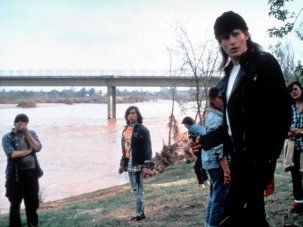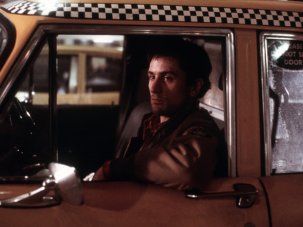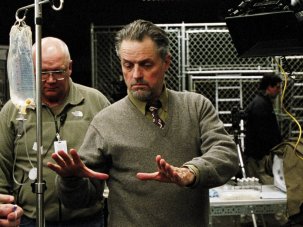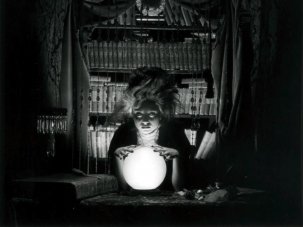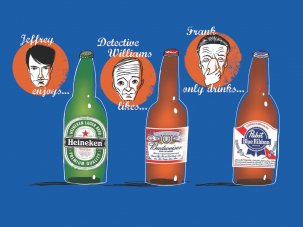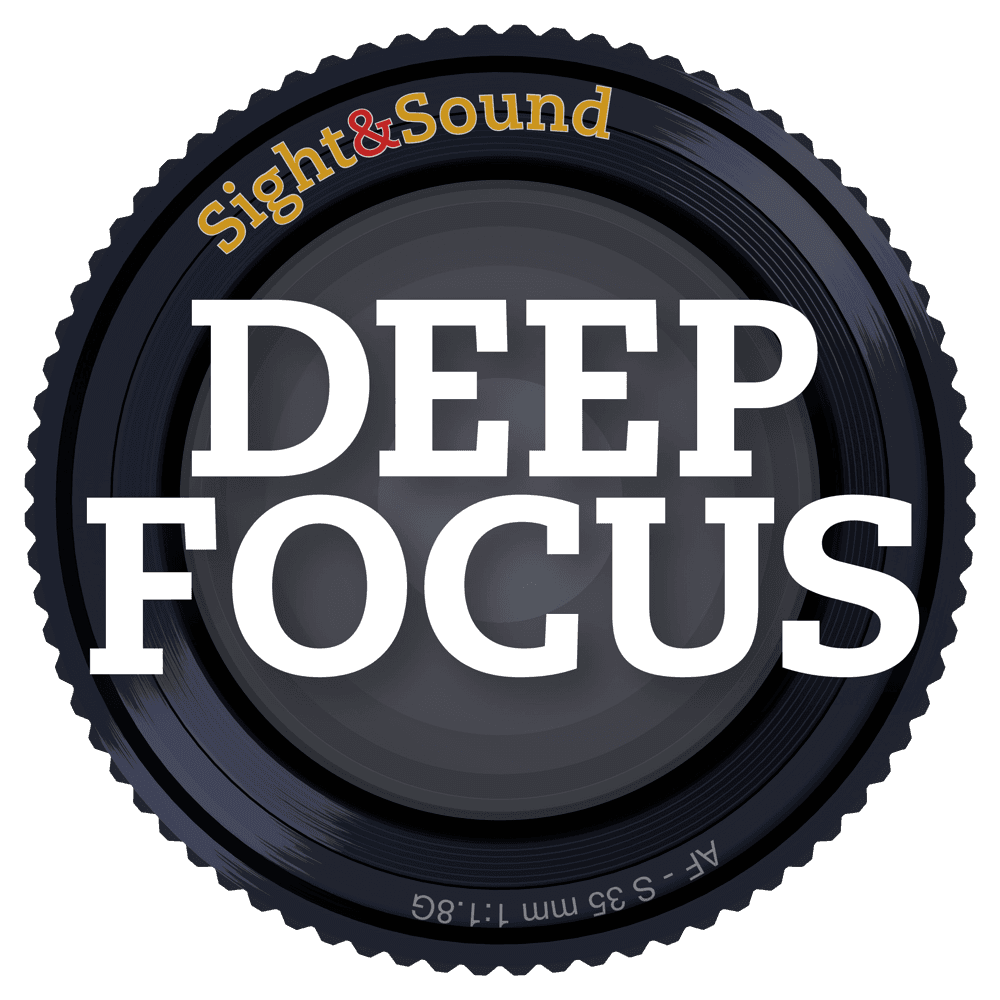
The Sight & Sound Deep Focus season Lost in America: The Other Side of Reagan’s 80s runs 1-30 May 2018 at the BFI Southbank, London, and is the cover feature of our June 2018 issue.
“On and on and on and on
What side are you on?
On and on and on and on
What side are you on?”
— The Replacements, Left of the Dial
In Left of the Dial, an anthem from 1985’s Tim, an album that has no shortage of them, The Replacements frontman and songwriter Paul Westerberg addresses an ode to the low-wattage college stations that were found at the bottom of the FM spectrum. These were the stations which had shown love to the band in their pimply punk days, and acted as an incubator for an entire host of other musics developing in the pungent dark, untouched by MTV and disdained by Rolling Stone.
A whole system of independent distributors and labels had come into place to circulate this now much celebrated and enshrined music, often nurtured in an isolated regional scene. The Minneapolis rock bars and the independent Twin/Tone label that brought up The Replacements, for one example, were part of an entire other-identified American culture that thrived through the 1980s, a system that included the alternative free weekly newspaper – the “local page” Westerberg mentions in the song – and, yes, a cinema that stood entirely distinct from the big studio products that largely define the period in the popular imagination: heavy ordnance action in the Stallone/Schwarzenegger mould, John Hughes comedies, the Spielbergian sublime, and going Back to the (Eisenhowerian) Future.
One thing that seems striking today about American culture in the 1980s, a period distinguished by the Reagan revolution and the Moral Majority’s reign of anti-art terror, is just how clearly the lines were drawn. Political divisions in the United States have arguably widened since, but the once-essential act of social distinction through subculture identification dwindled with the internet’s partition-busting presence.
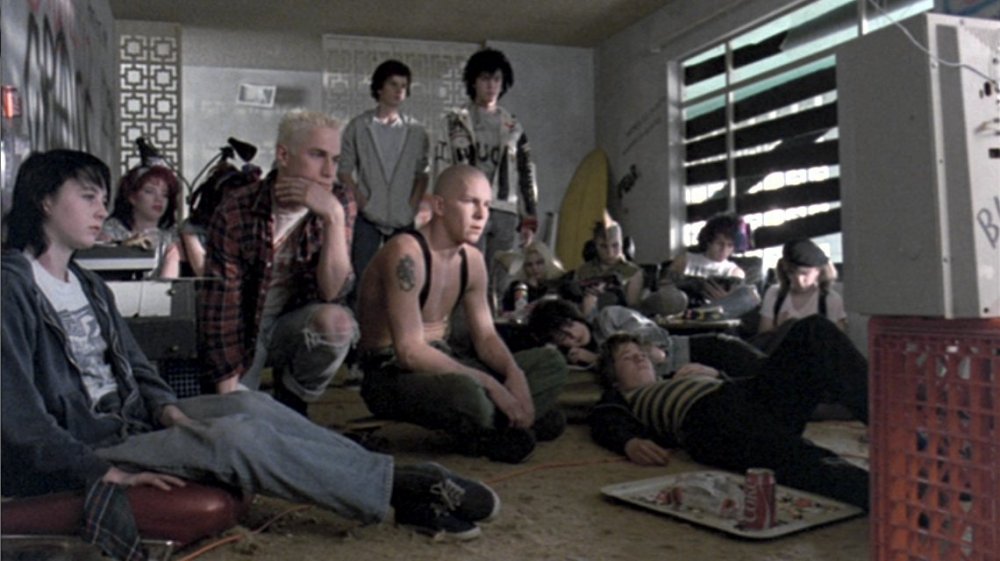
Suburbia (1984)
The culture celebrated in Left of the Dial would continue through a sort of magic hour moment in the 1990s, but with the watershed of Nirvana’s Nevermind and the rise of the Sundance celebrity, ‘indie’ would become very big business, represented in cinema by the new wave of self-conscious, self-defined independents like Jim Jarmusch, Sara Driver and Spike Lee, who’d begun to emerge in the mid-80s. (Lee’s emergence in particular marked a high-profile victory of a sort unprecedented since the 70s for black independent cinema, a largely underground phenomenon in the Reagan years, which saw the marginalisation of career-defining works by Kathleen Collins [1982’s Losing Ground], and LA Rebellion alumni Billy Woodberry [1983’s Bless Their Little Hearts] and Charles Burnett, with 1984’s South Central Los Angeles-set My Brother’s Wedding.)
Boundaries were blurring well before then – Tim was released on Sire Records, the band’s first on a major – but retrospectively the 80s seem like the last moment when the mainstream-counterculture dynamic that had acted to define post-war American culture offered a clearly comprehensible narrative and counter-narrative. Hair metal or ‘college rock’? Multiplex or cult cinema? What side are you on?
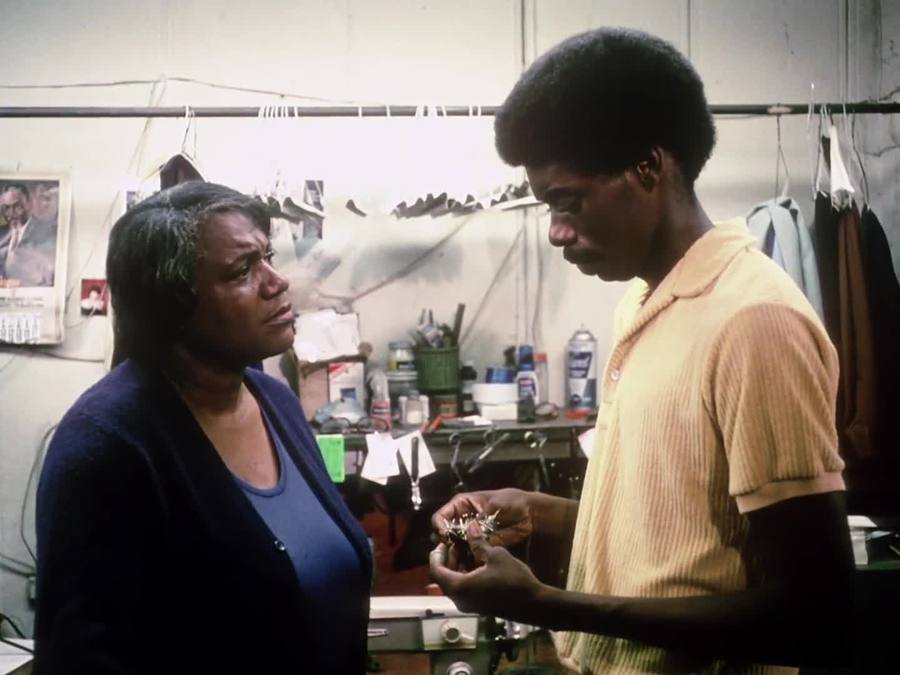
My Brother’s Wedding (1983)
The cultural output of any given country in any given decade has a nasty habit of failing to obediently correspond across the board to the collective wisdom of what that decade was all about. The heroic years of 70s New Hollywood were already largely in the rearview before Ronald Reagan defeated the incumbent Jimmy Carter in a landslide election, and in the United States, where for good or ill arts activity is relatively little reliant on public financing, there is no quantifiably identifiable correspondence between incoming presidential administrations and the sort of work which is liable to get made under them. The slow-moving process by which movies are greenlit and made means that there is a long delay before work responsive to perceived sea changes in the wider culture can even appear on cinema screens, and as such it is not as though a distinctly 80s style appeared overnight on either New Year’s Day or the morning of 5 November 1980.
To talk of 80s America, then, is to traffic in true-ish generalisations. What is true enough, however, is that Reagan’s ‘Morning in America’ signified a great public vindication for the small government-minded conservative movement as championed by William F. Buckley Jr and Barry Goldwater. The victory, framed as a rebuke to years and years of perceived ever-greater social liberalism and licence, provided new public prominence to a whole host of creepy, castigating culture warriors, those vainglorious hobgoblins of puritanism who are always resurfacing on the American scene in new guises and with new agendas for punishing the problematic. Whatever the 80s were to be, all signs suggested that they weren’t going to be more of the 60s, as counterculture leader Jerry Rubin turned entrepreneur, Jane Fonda went into the aerobics industry, and Yippie became yuppie. In Sidney Lumet’s Running on Empty (1988), Judd Hirsch and Christine Lahti play a couple of middle-aged ex-radicals still on the lam for the bombing of a napalm factory, but their fugitive existence is more a matter of habit than conviction – running from the law, they’ve also outpaced their youthful ardour.
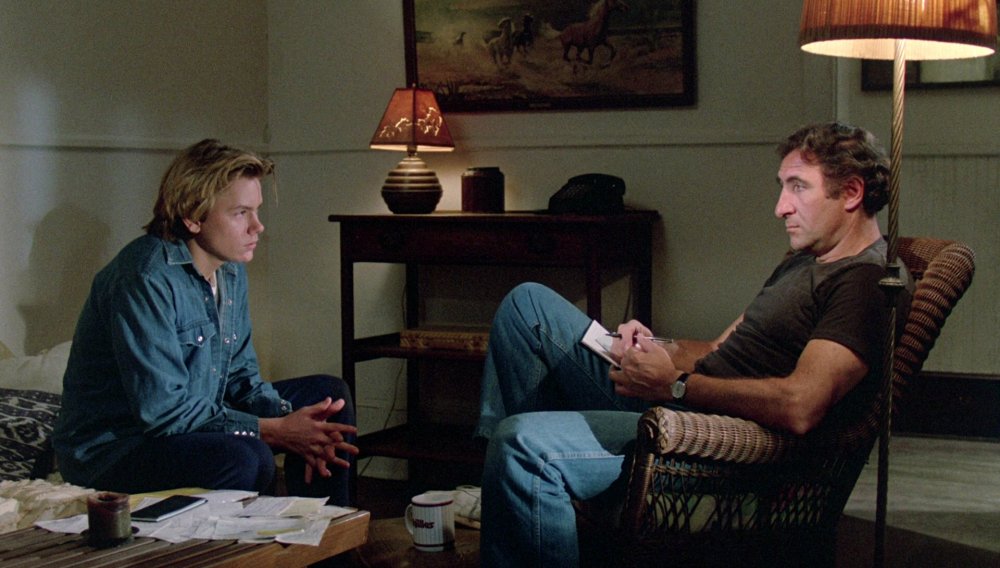
Running on Empty (1988)
While the United States, moments of wartime propaganda aside, has never had an ‘official’ film culture dictated from upstairs along the lines of, say, socialist realism, popular cinema like any popular product is susceptible to the vicissitudes of economy, trickle-down from the headline news, and trends grounded in perceived or anticipated changes in public taste, and so certain periods exhibit certain tendencies, and certain films typify those tendencies – even if identifying them is an inexact science. When I say that Ridley Scott’s Alien or Steven Spielberg’s 1941 (both 1979) feel to me, in their brash industrial spectacle, like anticipatorily 1980s movies, or that Ivan Passer’s Cutter’s Way (1981) or Robert Towne’s Personal Best or Hal Ashby’s Lookin’ to Get Out (both 1982), in their emphasis on character and often downbeat tone, feel like 1970s movies, I can only hope you have some idea what I mean. Some artists may seem to exemplify their period, as Scott and brother Tony did in the high-style 80s, as others seem to stand off at an oblique angle.
Alan Rudolph, a sort of understudy to Robert Altman in the 1970s, is one such out-of-step figure. In Choose Me (1984), he dissects the sexual mores of the 80s as precisely as did Arthur Schnitzler those of Vienna at the turn of the last century, but there is nothing Duran Duran in this movie, otherwise distinguished by a neo-noirish vision of urbanity and a spirit that is close to that of old barrelhouse blues.
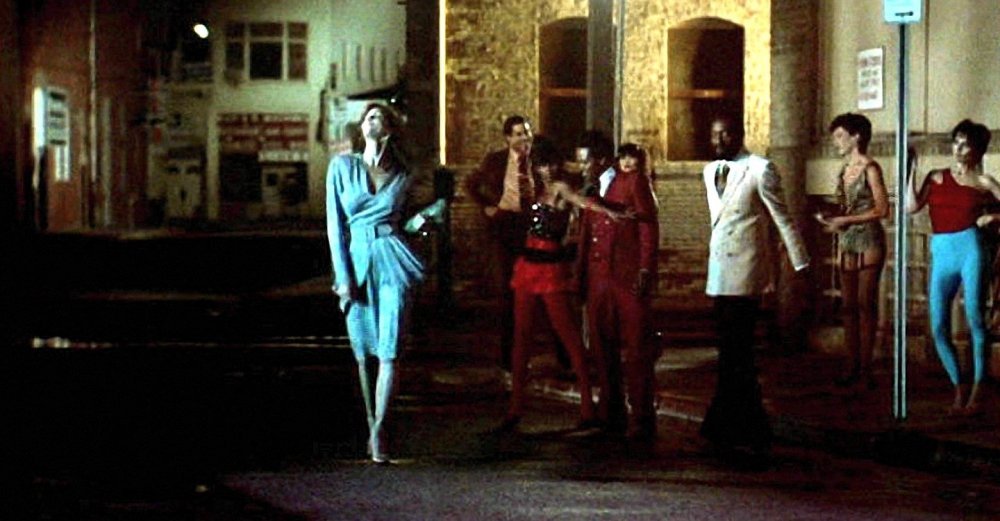
Choose Me (1984)
The title of old hippie Ashby’s movie could serve rather handily as a subtitle for The Other Side of Reagan’s 80s season, for in so many of the films featured here, everyday or ‘mainstream’ American life is represented as something to be escaped at all costs. These are movies that belong to their time, but it’s a time in which their characters are very often ill at ease. Throughout the period, narratives of members of the professional caste in crisis appeared with regularity, as films returned to the sense of lost identity and imposture exemplified in the rude-awakening lyrics of Once in a Lifetime by Talking Heads: “This is not my beautiful house… This is not my beautiful wife!”
Once in a Lifetime plays out Down and Out in Beverly Hills (1986), Paul Mazursky’s transposition of Jean Renoir’s Boudu Saved from Drowning (1932) into the Los Angeles haut monde – for frontman David Byrne was something like the poet laureate of arty yuppie anomie, distinguished also by a genuine fascination with motley American surfaces given full expression in his tabloid musical True Stories (1986).
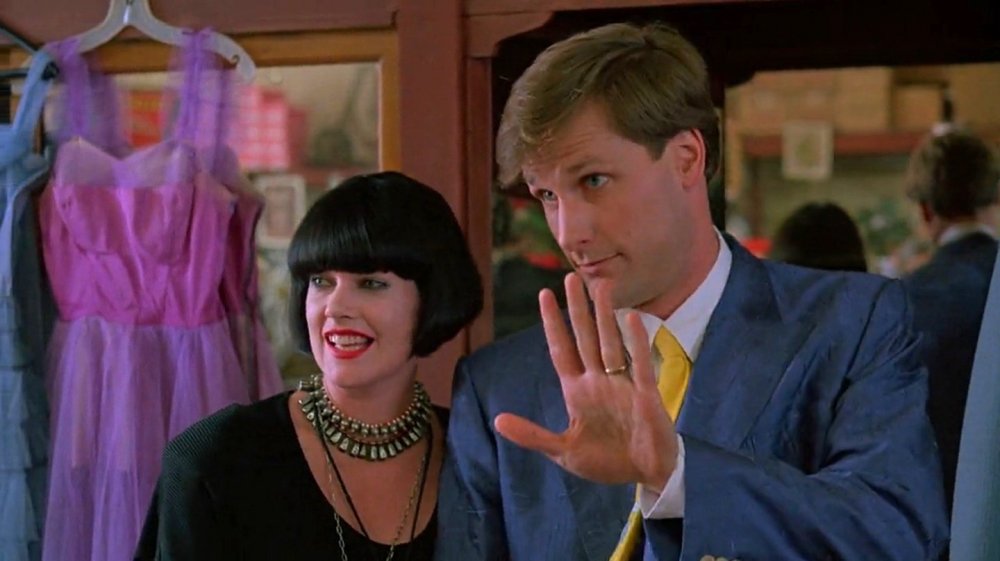
Something Wild (1986)
Jonathan Demme, who caught Byrne’s band at peak power in the essential concert documentary Stop Making Sense (1984), had a not dissimilar fetish for roadside and flyover country exemplified in his Something Wild (1986), in which Jeff Daniels is rescued from the cul-de-sac of his buttoned-down career by a close encounter with the open road courtesy of wild woman Melanie Griffith. Writing in 1987 in local page the Village Voice, critic J. Hoberman singled out both Byrne and Demme as standard bearers for a new delight in the stuff of American culture, popular and regional, that cut across multiple mediums, a loose, manifesto-less movement for which he suggested the titles “Kitschy Kool or Americanarama, Jetsonism or the Hayseed Renaissance, the New Patriotism or Neo-Regional Backlash, Middle American Grotesque or Shopping Mall Chic”.
Lost in America (1985) begins as a love song to the New Patriotism, then quickly goes off-key. The setup of Albert Brooks’s comedy has a married couple of pernickety Los Angeles yuppies dropping everything to hit the open road and become one with the Union, only to soon learn the hard way that, per Scott Fitzgerald, there’s no second act due in their American lives. The abortive ‘adventure’ ends with a chastened scuttle back to the safety of routine, a concluding note echoed in Martin Scorsese’s After Hours of the following year – a film whose uptown/downtown dynamic recurs, in a very different context, in Joan Micklin Silver’s Crossing Delancey (1988), which has protagonist Amy Irving suspended between aspirational Upper West Side cosmopolitanism and fealty to her ethnic Jewish roots in the Lower East Side, as embodied by vying suitors.
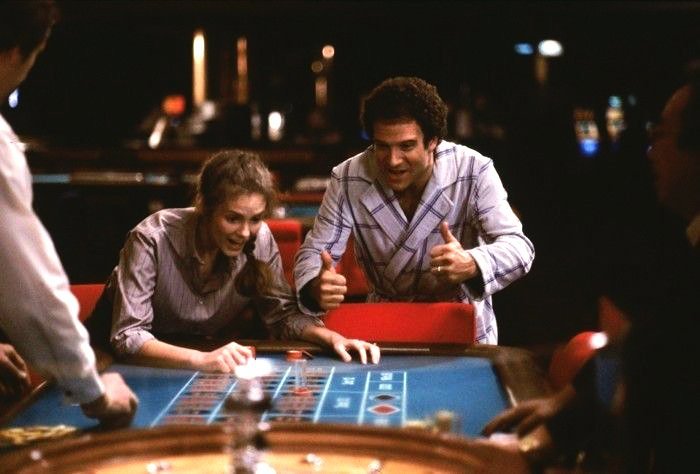
Lost in America (1985)
The Man in the Grey Flannel Suit reborn in loose linen for the Eisenhower Era 2.0, the yuppie was the defining figure of the decade when the loud announcement of material success, never exactly out of fashion in these United States, came roaring back with a vengeance. “Greed is good,” spaketh Michael Douglas’s Gordo Gekko in Wall Street (1987), a line quoted far more than is remembered the moral of Oliver Stone’s stockbroker swashbuckler – something to the effect that greed is, actually, bad. (Oh, it’s got a Talking Heads song, too.)
In Jack Sholder’s sci-fi buddy cop picture The Hidden (1987), even an alien serial killer newly arrived on earth seems to instinctively know the importance of acquiring status symbols, conceiving in particular a passion for a red Ferrari Mondial. But if many of these movies paint an ambivalent or unflattering picture of the average run of white collar professional existence in America in the 1980s, in the work of a Demme or a Silver we can also hear a whisper of hope: the real thing – or a realer thing, at least – is out there, waiting to be found.
This longing to go out and find life where it is marks a number of youth-oriented films of the period – though without adult savvy, adult agency and adult money the search for life can be fraught with potential perils. For Laura Dern’s 15-year-old early bloomer in Smooth Talk (1985), a Romeo twice her age looks like the ticket out of Marin County – though he brings with him much, much more trouble than she’d bargained for. In River’s Edge (1986), six-packs of beer and hash resin scrapings are the only ready escape from a suburban Nowheresville where the most available adult is Dennis Hopper’s skunk weed maven.
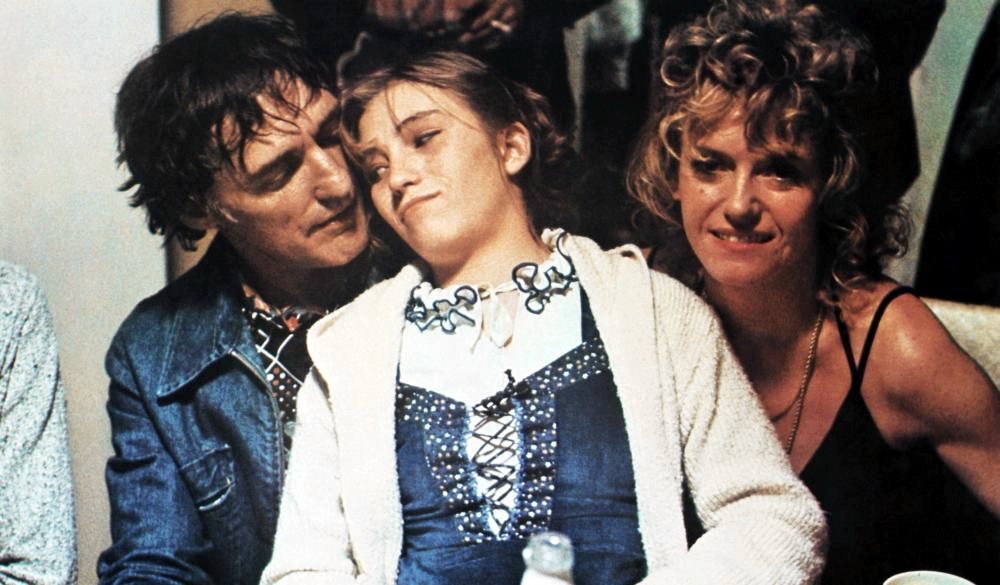
Out of the Blue (1981)
Hopper returned to movies with a vengeance in the 80s like the damaged and dangerous return of the hippie repressed, the feral heavy in David Lynch’s Blue Velvet (1986) and before that director and co-star of Out of the Blue (1980). In that film Linda Manz’s adolescent rock ’n’ roller Cebe, who sticks out like a safety pin in her Podunk town, hits the bricks to cruise the mean streets of Vancouver, later seen in a rare moment of real girlish bliss when sitting in on a performance by local punk act Pointed Sticks. Cebe may escape for a little while, but the pain of childhood trauma stays nipping at her heels – in Penelope Spheeris’s Suburbia (1983), a movie of latchkey squatters getting lost in music, sex and illicit substances, we see the kind of makeshift dysfunctional family she might’ve found company in misery with.
Suburbia was street-cast with real punks, while both River’s Edge and Smooth Talk drew heavily on the details of true crime incidents, and if you have any sense that these fiction films were exaggerating the risks facing youths left vulnerable by the ongoing breakdown of traditional community and the dismantling of the social safety net, you would do well to see Martin Bell’s documentary about homeless youths, Streetwise (1984) – the post-shoot body count among the young cast offers proof that the truth was bleaker than any fiction.
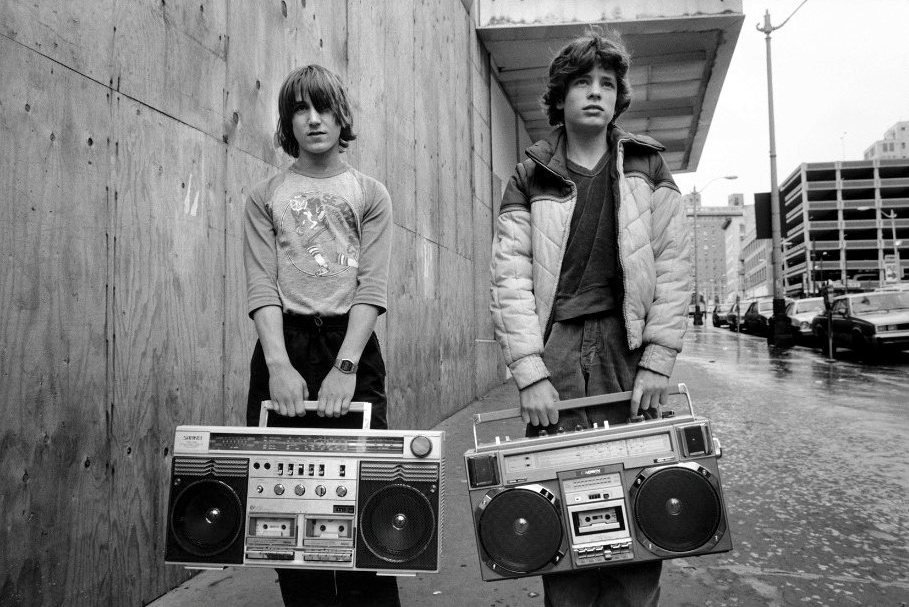
Streetwise (1984)
The boys and girls of Streetwise are life-hardened chisellers looking for any hustle, with the possibility of having to sell the only asset they have a last – and sometimes even first – resort. The sale of sex, in a time of acquisitive overdrive, took on a new interest. American Gigolo (1980) made director Paul Schrader bankable and Giorgio Armani a bankroll. James Bridges’s thriller Mike’s Murder (1984) offered a tender perspective on a same-sex sugar daddy-and-baby relationship, something almost unheard of from a major studio production.
Despite the strides taken in the post-Stonewall years in matters of LGBTQ visibility and representation, the idea of a mainstream queer culture was a contradiction in terms in the 1980s – perhaps even more so than it had been in the glam and disco 70s. It was largely alternative cinema, then, that was left to create images and stories pertaining to the wider spectrum of non-heteronormative desire and experience including the devastation wrought by the spread of HIV/Aids, acutely felt in every gay community in America but all but unspoken of outside a handful of television dramas and a Golden Girls episode before Bill Sherwood’s historical comic romance Parting Glances (1986).
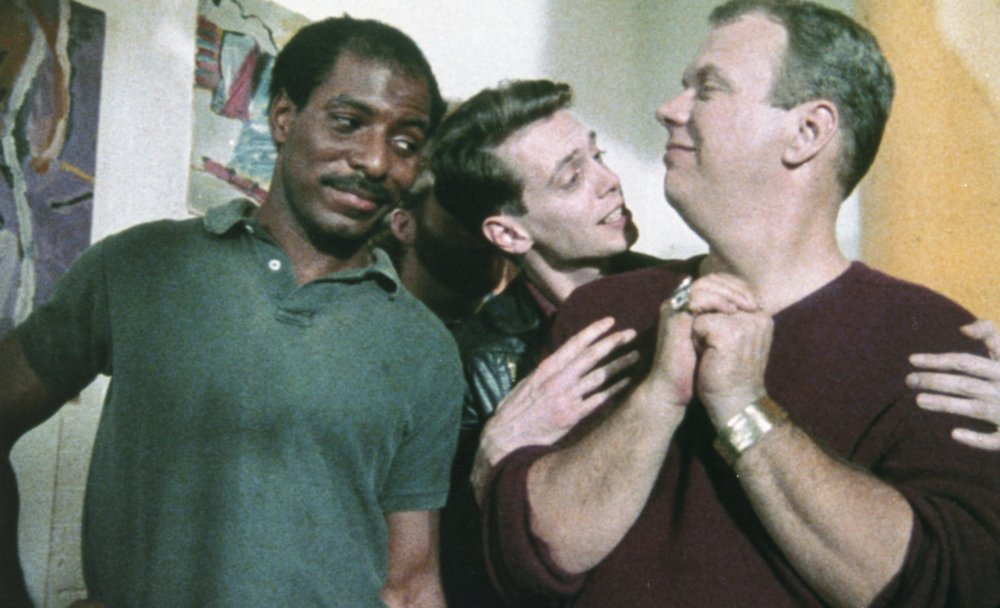
Parting Glances (1986)
History repeats itself – well, sort of. In the immediate aftermath of the election of Donald Trump, a much-heard rallying cry among crestfallen liberals was “We survived Reagan…” though in fact Trump is not Reagan, and a great many people in the milieu of Parting Glances didn’t survive. Some of the anti-Trump brigade went so far as to prophesy a groundswell of resistance artwork to match the left of the dial culture of the Reagan years, while failing to recognise that the forces that had shaped and animated that culture went far beyond a response or an objection to one occupant of the executive office.
But we still have the films. The demarcation lines between the 80s pop mainstream and underground may seem less important now – admittedly Mötley Crüe had some bangers, and Back to the Future is a gas – but the best of this 80s other cinema doesn’t need to push against an anti-model to stand on its own: it goes on and on and on and on.
Watch Sierra Pettengill’s video essay The Other Side of 80s America
In the June 2018 issue of Sight & Sound
More notes by Nick Pinkerton on the 12 films in our Deep Focus season, from Out of the Past to Running on Empty, plus the ‘high concept’ mainstream 1980s.
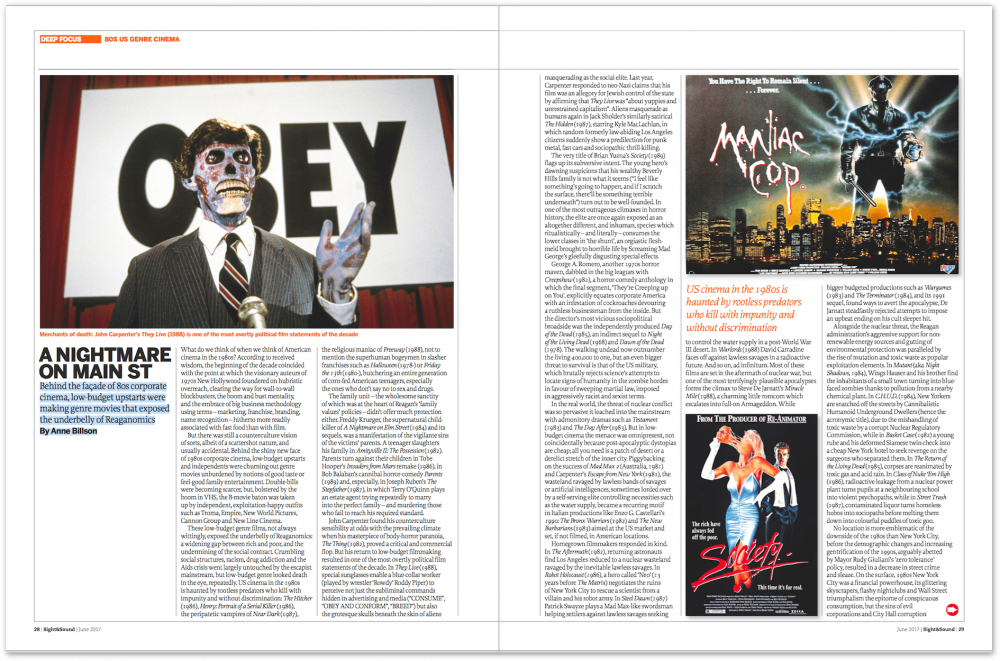
+ A nightmare on Main St
Behind the façade of 80s corporate cinema, low-budget upstarts were making genre movies that exposed the underbelly of Reaganomics. By Anne Billson.
-
Sight & Sound: the June 2018 issue
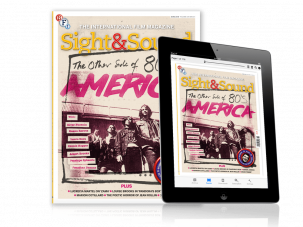
The other side of 80s America, Marion Cotillard, Lucrecia Martel, Louise Brooks, Jean Rollin, Derek Jarman, Jeune femme and more.
-
The Digital Edition and Archive quick link
Log in here to your digital edition and archive subscription, take a look at the packages on offer and buy a subscription.




